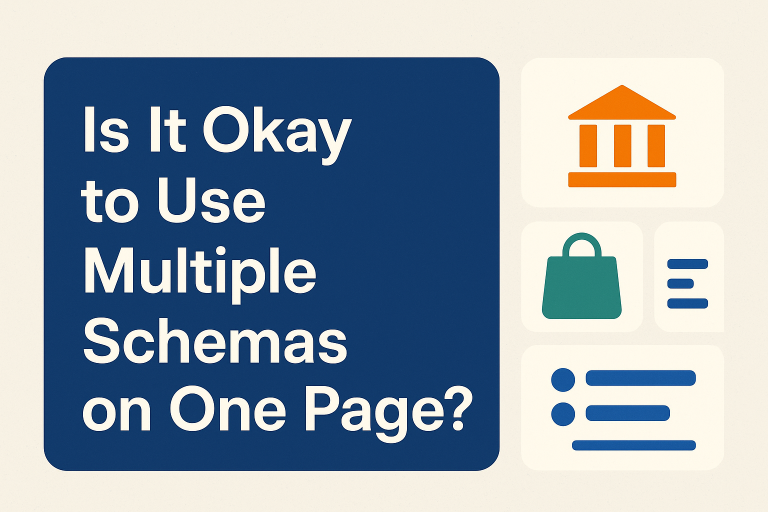If you have been working on improving your website’s SEO, you’ve probably heard about schema markup or structured data. Schema helps search engines like Google understand the content on your page better, which can lead to rich snippets and improved visibility in search results.
But one common question many website owners ask is:
“Is it okay to have more than one schema on a single webpage?”
Let’s dive into it!
The Short Answer: Yes, It’s Absolutely Okay
Having more than one schema on a webpage is not only allowed but also recommended in many cases. In fact, Google encourages using multiple schema types as long as they accurately represent the content on your page.
For example, a single webpage can include:
- Organization schema to describe your business details
- Product schema if you’re selling an item
- FAQ schema to mark up your frequently asked questions
- Breadcrumb schema to show the structure of your site
Each of these schema types serves a different purpose, and when used correctly, they work together to give search engines a complete understanding of your page.
Why Multiple Schemas Can Be Good for SEO
- Better Context for Google
When you use multiple schemas, you’re giving search engines more context about your page. This helps them display your content in a richer, more informative way in search results. - Increased Visibility in Search Results
Pages with rich snippets (like star ratings, FAQs, or pricing info) tend to stand out more in Google search results. Multiple schemas increase your chance of qualifying for those rich results. - Enhanced Click-Through Rates (CTR)
A more attractive search result can encourage users to click on your link instead of others. That extra detail like ratings or a how-to list can make a big difference. - Better Structured Data Relationships
Multiple schemas can also be linked to each other (for example, aProductschema connected to anOrganizationschema). This makes your structured data even more meaningful.
What You Should Avoid
While multiple schemas are great, there are a few things to watch out for:
- Don’t use unrelated schemas. Only include structured data that accurately represents your content.
- Avoid duplicates. Having the same schema type repeated with different or conflicting data can confuse Google.
- Test your schemas regularly. Use tools like Google’s Rich Results Test or Schema.org validator to make sure your markup is valid.
Example of Multiple Schemas on One Page
Let’s say you have a product page selling “Bali Handmade Bags.”
You might include:
Organizationschema (for your company Wayan Bali Web)Productschema (for the bag itself)Reviewschema (for customer feedback)Breadcrumbschema (for site navigation)
All of these together help Google understand your business, your product, and how the page fits within your website structure.
Final Thoughts
Having more than one schema on your webpage is completely fine and often beneficial for SEO. The key is to make sure every schema you use is relevant, accurate, and properly formatted.
At Wayan Bali Web, we help businesses in Bali and beyond implement structured data the right way, ensuring your website is fully optimized for search engines and user experience.
If you’d like professional help setting up or auditing your schema markup, contact Wayan Bali Web today and let’s boost your SEO performance together.
